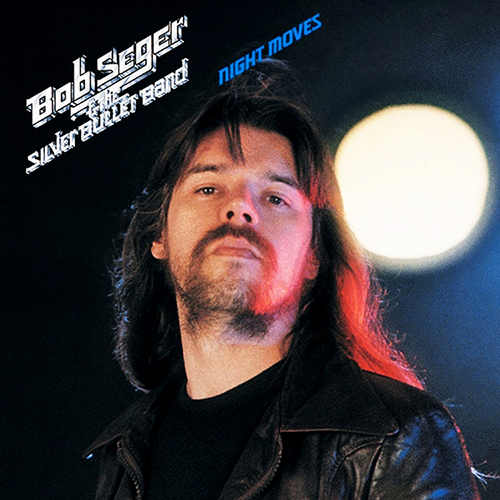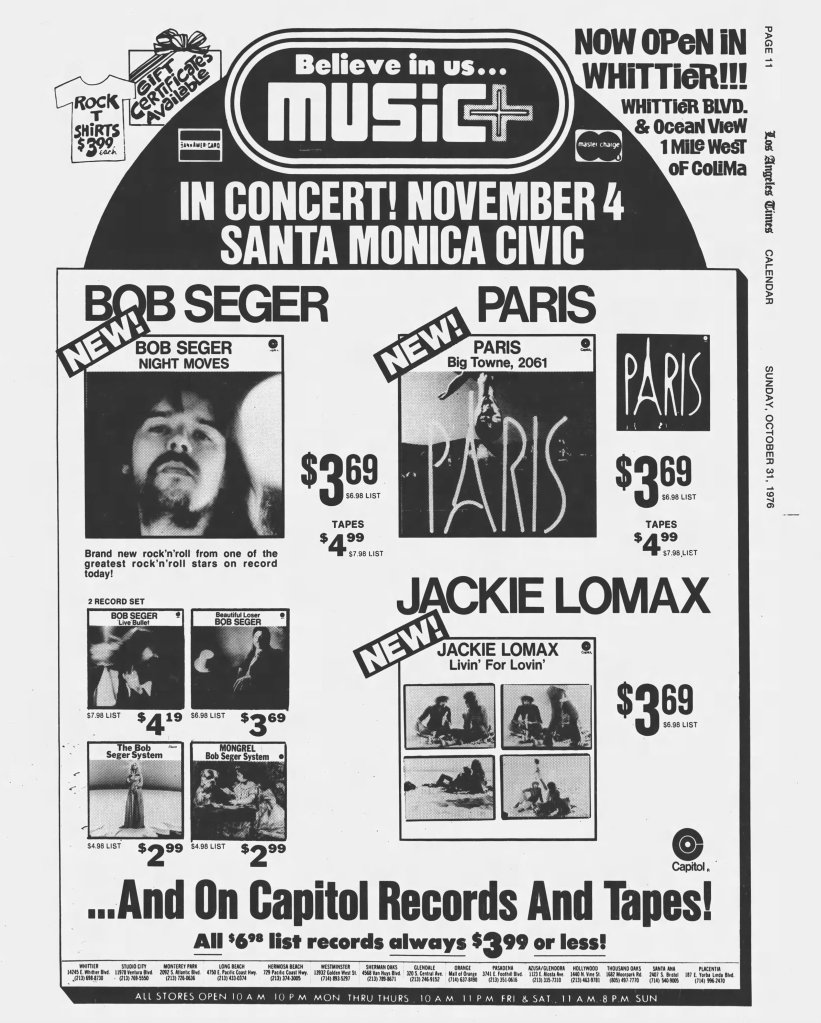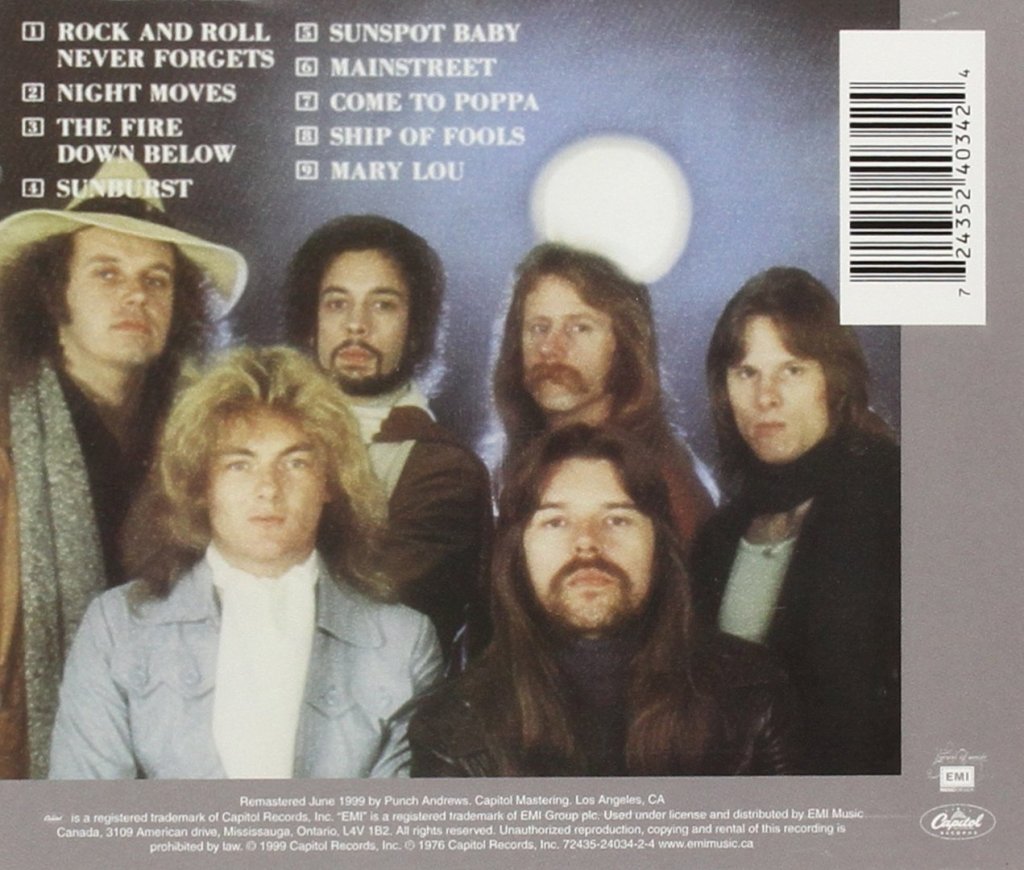In a record review that appeared in the Long Beach (Cal.) Independent newspaper on Oct. 29, 1976, a critic identified only by the initials J.W. provided a shorthand summary of Bob Seger’s career before noting his breakthrough album, Live Bullet, and the quality of his latest studio set. “The most important single observation to make about Night Moves,” he wrote, “is that this is a record for adults.” A month later, Rich Aregood of the Philadelphia Daily News encouraged his readers to buy the record, calling Seger and his band “one of our unrealized natural resources.” Other critics, too, shared their enthusiasm for Night Moves.
In a Rolling Stone review roundup syndicated to newspapers, for instance, Dave Marsh wrote that the album “is decidedly superior to his other work, primarily for the writing and arranging” and said the title track was “as evocative a ballad as anyone save Rod Stewart has written this season.” He also noted the “broad debts to Bruce Springsteen and Bob Dylan” that Seger owed for such songs as “Mainstreet” and “Ship of Fools,” but also said the Midwest rocker’s “so guileless and emotive in his presentation that it’s the song and not the source that’s memorable.” Robert Hilburn of the L.A. Times, in his review, also noted Seger’s similarity with Springsteen, especially on “Rock and Roll Never Forgets,” but heard another now-legendary artist within the grooves of “Night Moves”—Van Morrison.
J.J. Syrja of the Seguin (Texas) Gazette-Enterprise, in the newspaper’s Nov. 11, 1976, edition, also heard echoes of Springsteen and Morrison: “[T]he singing recalls Bruce Springsteen (‘he’s a lot like Springsteen,’ says a friend, ‘except that you can understand the words.’), Van Morrison’s majestic ‘Listen to the Lion’ and Mick Jagger without sounding like anyone but Bob Seger.”
Those are excerpts from just a few of the critical overviews of Bob Seger’s ninth album that I uncovered while scouring the virtual archives of newspapers.com this morning. Not everyone loved the nine-track album through and through, mind you. Dave Marsh, for example, found the mix a tad muddy—but everyone recommended it. Quite a few raved about it, too, such as the UPI’s Bruce Meyer, whose review appeared in newspapers on Feb. 28, 1977.
Seger’s backstory is well known, I suppose, but for those few who aren’t aware, I’ll repeat what I wrote in my review of his Nine Tonight live set from 1981: “After a decade-plus of making great rock ’n’ roll, Seger was little known beyond his native Michigan. As one story goes, at some point in mid-’76 he played before 50 or so fans in Chicago only to, three days later, co-headline a sold-out show at the Pontiac Stadium, which held 76,000.” The turnaround started in 1973 with his Beautiful Loser album, which notched 200,000 in sales, and continued with Live Bullet, released in April 1976, which doubled those numbers and, perhaps more importantly, earned radio airplay for several of its tracks, including the road-weary “Turn the Page.”
Nothing prepared radio and its listeners for the title track of Night Moves, however. Inspired by American Graffiti, it conjures the magic and mystery of youth, a specific time and place, while simultaneously celebrating and mourning the distance between then and now. To borrow a line from “Rock and Roll Never Forgets,” “sweet 16’s turned 31.” It’s a powerful paean to the passage of time, nostalgic but not nostalgia. Released as a single in December, it reached No. 4 on the Billboard charts and powered the album, which topped off at No. 8 on the album charts, to sell more than a million copies by March 1977.
The second single, “Mainstreet,” continues with the pull of the past. When he’s “lonely and beat,” Seger sings, he drifts back in time. Although it failed to make the Top 40, the song became—like “Night Moves”—a staple of AOR radio and, later, classic rock. Other highlights include the opening “Rock and Roll Never Forgets,” which finds him encouraging the middle-aged to get back in touch with their rock ’n’ roll roots—even if it’s at the local bar. Seger, who was 31 at the time, wrote it after attending a high school reunion.
The themes of looking back, of attempting to grasp one’s youth again, are fairly universal, which speaks to the ongoing popularity of Night Moves and its songs. Aside from the aforementioned troika of tunes, the other tracks—while not as great—are spectacularly solid, including the guitar-heavy “Fire Down Below,” humorous “Sunspot Baby” and Dylanesque “Ship of Fools.” (For those who don’t read liner notes, the Silver Bullet Band plays on the first four tracks and “Ship of Fools,” while the famed Muscle Shoals Rhythm Section handles tracks five through eight.)
If you’re never heard the album in full, give it a spin instead of whatever hits-heavy playlist Apple Music or Spotify serves up under Seger’s name. And if you are familiar with it, what are you waiting for? “Come back baby, rock and roll never forgets…”
The track list:




One thought